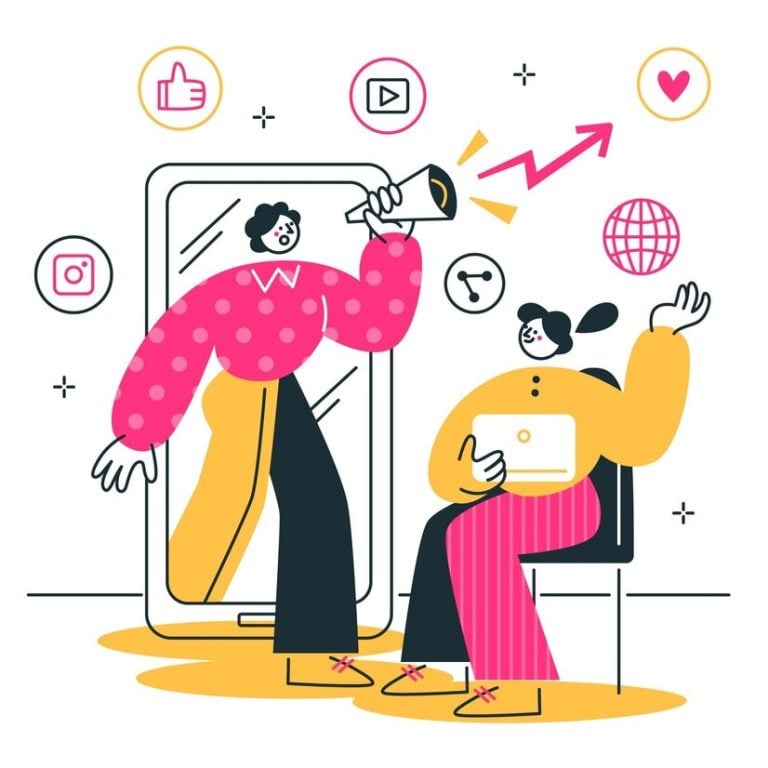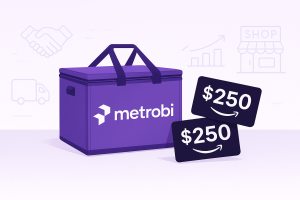I’ve seen how fast marketing changes. It moves way faster than most businesses can keep up with when trying to build brand awareness. What worked yesterday might not work today, and what feels cutting-edge now could be old news by tomorrow.
From my experience, the gap between marketing leaders and followers keeps getting bigger, especially when it comes to truly understanding your target audience.
Most businesses are still using outdated awareness campaigns and marketing campaigns from 2023, wondering why their results keep declining among existing and potential customers. According to recent research, 68% of companies invest in campaign types that already show diminishing returns.
But here’s what’s fascinating: the most successful marketing campaign brands leverage user-generated content to connect with their target audience without chasing every new trend. They’re strategically selecting specific types of campaigns that complement each other.
Companies seeing the highest ROI aren’t using random marketing tactics – they’re building interconnected systems with specific campaign types designed to work together as part of a comprehensive marketing strategy.
The question isn’t whether you should be using email marketing or social media campaigns. It’s about which combination of marketing channels creates a marketing ecosystem that drives consistent growth for existing customers.
Think about it – are you still separating your marketing into disconnected silos? Does your social media team know what your email marketers are doing to reach potential customers? Are your SEO efforts aligned with your content creation?
If you’re hesitant to answer, you’re not alone. Most marketing departments, ignoring crucial customer feedback, operate as separate islands rather than a unified force in their advertising and marketing campaigns.
This guide will show you the 12 essential types of marketing campaigns that form the backbone of the best marketing campaigns in 2025. More importantly, you’ll learn how to connect them into a system that multiplies their effectiveness.
Boost customer satisfaction with just a few clicks
Most-Loved Features:
- On-demand drivers
- Real-time GPS tracking
- Delivery confirmation photos
- Over 50% of customers report a smoother delivery experience
Digital Marketing Strategies That Work Now
Digital marketing shifted toward AI integration, short-form video content, and privacy-focused targeting in 2025
Social media platforms TikTok, Instagram, and Discord lead user engagement, with LinkedIn gaining for B2B applications
First-party data collection becomes essential as third-party cookies phase out completely
The past year has seen dramatic shifts in digital marketing effectiveness. What worked in early 2024, including search engine strategies, has evolved significantly by April 2025. Traditional approaches have given way to more personalized, data-driven strategies that respect user privacy while delivering measurable search engine results. Let’s examine this transformation month by month and provide clear guidance on what works now.
Social Media Campaigns For Content Marketing
The social media landscape underwent significant changes throughout 2024 and early 2025. In May 2024, TikTok’s user base crossed 1.8 billion monthly active users, overshadowing traditional methods like print advertising. Instagram followed with its focus on social media marketing campaigns through Reels and the strategic use of press releases, which now account for 60% of time spent on the platform. For marketers seeking inspiration, exploring some of the most effective social media campaign examples can provide valuable insights. These campaigns showcase how brands creatively engage audiences, drive interaction, and boost brand loyalty across platforms like TikTok, Instagram, and Discord. To delve deeper into these strategies and see real-world applications, check out our detailed post on top social media campaign examples worth following.
From June to August 2024, we witnessed the rise of micro-communities on Discord, where brands began creating dedicated servers for their most loyal customers. This trend started with gaming companies but quickly spread to fashion, technology, and even financial services, influencing future types of marketing campaigns. Discord’s user base grew 35% year-over-year, reaching 450 million monthly active users by January 2025.
September 2024 marked a turning point for LinkedIn, which introduced a suite of AI-powered tools for business networking. These features helped the platform grow its active user base by 22% over six months, making it increasingly valuable for B2B marketers focusing on paid search. Companies running marketing campaigns on LinkedIn reported a 28% higher conversion rate compared to the previous year.
The final months of 2024 saw Twitter (now X) struggle to maintain relevance for marketers, with many shifting budgets to platforms offering better targeting capabilities and engagement rates, all while adhering to their marketing campaign timeline. Overall, social media budgets increased by 18% from 2024 to 2025, contributing to greater brand awareness, while traditional methods like direct mail are still being evaluated for effectiveness.
Platform-Specific Strategies
For TikTok, successful brands focus on creating authentic content that blends seamlessly with organic posts. The most effective marketing campaigns featured real employees and behind-the-scenes glimpses rather than polished advertisements. Companies partnering with micro-influencers (those with 10,000-50,000 followers) saw 3.4x higher engagement rates than those working exclusively with celebrity influencers and utilizing creative assets.
Instagram marketing campaigns now revolve almost entirely around Reels and Stories, with static posts playing a supporting role alongside more dynamic creative assets. Brands that post Reels as part of their product marketing campaigns at least three times weekly saw 78% higher follower growth rates than those posting less frequently. Interactive elements like polls and quizzes within Stories drove an average 34% increase in engagement.
LinkedIn’s transformation has been remarkable, with its algorithm now favoring conversational content over traditional corporate messaging. Companies using LinkedIn’s AI-powered content suggestions saw 41% higher click-through rates on their posts. The platform’s social media advertising, marketing campaigns, and newsletter feature have become a powerful tool for thought leadership, with subscriptions growing 86% year-over-year.
SEO Marketing Campaigns with Google Analytics
The SEO landscape underwent fundamental changes in the past year, driven by Google’s implementation of the Helpful Content System in March 2024 and subsequent updates throughout the year. This shift prioritized content that demonstrates expertise, experience, authority, and trustworthiness (E-E-A-T), often supported by paid media.
From April to June 2024, websites that had invested in comprehensive, expert-written content saw significant ranking improvements, while those relying on AI-generated content without human editing experienced ranking drops averaging 34%. This trend continued through the summer months, including insights from an email marketing campaign and direct mail campaign, with Google’s August update further refining content quality signals.
The most notable SEO development came in October 2024, when Google fully implemented passage ranking across all search queries. This change meant that specific sections of content could rank for relevant queries, even if the overall page had a broader focus. As a result, long-form, comprehensive content with clear headings and structure saw improved performance, boosting organic traffic.
Voice search optimization became critically important by the end of 2024, with 43% of all searches now conducted through voice assistants. This shift required marketers to optimize for conversational keywords and questions, especially in video marketing campaigns focusing on natural language patterns rather than traditional keyword phrases.
Technical SEO Advances
Mobile optimization is no longer optional—it’s the baseline. Google’s mobile-first indexing became even more stringent in January 2025, penalizing sites that didn’t provide identical experiences across desktop and mobile. Page speed became an even stronger ranking factor, with sites loading in under two seconds seeing 27% higher conversion rates than slower competitors.
Core Web Vitals remained critical metrics throughout 2024-2025, with the introduction of Interaction to Next Paint (INP) replacing First Input Delay (FID) as a key user experience measurement. Sites meeting all Core Web Vitals thresholds saw an average ranking improvement of 11% compared to those failing these metrics.
Local SEO proved increasingly valuable, with Google Business Profile optimization delivering 32% higher foot traffic for retail businesses that maintained complete, accurate listings with regular updates and responses to reviews. The introduction of advanced schema markup options in February 2025 provided new opportunities for rich results in search.
Email Marketing Campaigns
Email marketing campaigns experienced a renaissance in 2024-2025, especially for product launch campaigns driven by improved personalization capabilities and marketing automation to increase sales, and the decreased effectiveness of social media organic reach. The average ROI for email marketing campaigns reached $45 for every $1 spent, making it the highest-returning digital channel for most businesses.
In the first quarter of 2024, segmentation became more sophisticated, with marketers moving beyond basic demographic divisions to behavioral and predictive segmentation. Companies using AI-powered segmentation tools reported 52% higher open rates and 41% higher click-through rates compared to those using manual segmentation.
The middle months of 2024 saw the rise of interactive email elements, with AMP for Email adoption growing by 78% year-over-year. Emails containing interactive quizzes, polls, or product selectors achieved 63% higher engagement rates than static emails. By September 2024, major email service providers had standardized support for these interactive elements.
The most significant email trend of late 2024 was the shift toward zero-party data collection directly through email campaigns. As third-party cookies were phased out completely by January 2025, brands turned to preference centers and progressive profiling techniques within email sequences to gather customer information willingly shared.
Automation and Personalization Advances
Automation workflows have evolved significantly, moving beyond simple triggers to complex, multi-path journeys based on subscriber behavior. Companies using advanced automation reported 38% higher revenue per subscriber compared to those using basic automation sequences.
Personalization extended well beyond using the subscriber’s name, with dynamic content sections becoming standard practice. By March 2025, leading brands were implementing real-time content that changed at the moment of email opening based on the subscriber’s location, weather, time of day, or recent browsing history.
A/B testing became more sophisticated, with multivariate testing allowing marketers to test multiple elements simultaneously. This approach, combined with AI-driven analysis, helped companies optimize their email campaigns more quickly, with testing cycles reduced from weeks to days or even hours.
Addressing Key Marketing Campaign Questions
How many types of marketing campaigns exist? While there are countless types of marketing campaign variations, most marketing efforts fall into 12 main categories, including the three digital approaches covered in this section. The remaining nine types, which include traditional, event-based, and integrated campaigns, will be explored in the following sections.
For those wondering about the 4 P’s of marketing campaigns, they remain relevant in 2025: Product (what you’re selling), Price (how much it costs), Place (where it’s available), and Promotion (how you communicate about it). Digital strategies now affect all four areas, not just promotion.
The four stages of marketing campaigns still follow the traditional model: Planning (setting objectives and strategies), Implementation (launching and managing the campaign), Measurement (tracking performance through KPIs), and Optimization (making data-driven improvements). Modern marketing campaigns simply move through these stages more rapidly, sometimes in real-time.
Regarding PPC marketing campaigns, there are seven primary types currently in use: search ads, display ads, social media ads, remarketing campaigns, shopping ads, video ads, and app promotion campaigns. Each serves different objectives and works best within specific contexts in the current digital landscape.
Looking ahead to the next 12 months, we can expect several emerging trends to gain momentum. First, contextual advertising will continue to replace cookie-based targeting, requiring marketers to focus more on content relevance than user tracking. Second, social commerce will become more seamless, with in-platform purchasing reducing friction in the buyer’s journey. Finally, voice commerce will expand beyond simple product searches to complete transactions, especially for repeat purchases.
For marketers planning their strategies for the remainder of 2025, I recommend prioritizing first-party data collection, investing in short-form video content, and developing strong community engagement practices. These approaches will provide the greatest return as digital marketing continues to evolve toward more personalized, private, and interactive experiences.
Integrate Great Marketing Campaigns for Cohesive Brand Messaging
Integration creates stronger customer journeys across touchpoints
Consistent messaging builds brand recognition and trust
Data synchronization between channels improves ROI by 38%
360-Degree Marketing Campaigns
A 360-degree marketing campaign represents a comprehensive approach where brands create consistent messaging across all possible customer touchpoints. These brand awareness marketing campaigns integrate both traditional and digital channels to create a seamless brand experience. The Coca-Cola “Share a Coke” campaign stands as a prime example of successful 360-degree marketing, where personalized bottles appeared in stores while social media marketing campaigns encouraged sharing photos, creating a cohesive experience regardless of where customers encountered the brand.
Research from McKinsey shows that companies implementing true 360-degree campaigns see 15-20% higher marketing ROI compared to siloed approaches. This happens because the consistent reinforcement across channels strengthens brand recall and builds trust with audiences. The key lies in planning these marketing campaigns from the ground up with integration in mind, rather than retrofitting disparate campaigns together.
Disney’s approach to film marketing exemplifies this concept. For Marvel’s “Black Panther,” the company executed a masterful 360-degree campaign that began with traditional trailers but expanded to include partnerships with influential figures in Black culture, museum exhibits about African art that inspired the film, themed merchandise across major retailers, and social media campaigns that connected all these elements. The film grossed over $1.3 billion worldwide, with marketing experts attributing significant success to this effective marketing campaign and integrated approach.
Implementation Steps for 360-Degree Campaigns
The execution of a successful 360-degree campaign requires methodical planning. First, establish clear campaign objectives that align with broader business goals. Second, develop a central creative concept strong enough to translate across all media. Third, map customer journeys to identify all possible touchpoints. Fourth, create channel-specific content that maintains brand consistency while optimizing for each platform’s strengths. Finally, implement cross-channel measurement tools to track performance.
Cross-Channel Marketing Campaigns
Cross-channel campaigns focus specifically on digital platforms, creating synchronized messaging that follows customers across their online journey. Unlike multi-channel marketing (where brands simply exist on multiple platforms), true cross-channel campaigns use data to create continuity as customers move between touchpoints. For example, when a customer views a product on a website but doesn’t purchase, they might receive an email reminder and later see a social media ad featuring that same product.
The technical foundation of cross-channel marketing campaigns relies on unified customer data platforms (CDPs) that track interactions across touchpoints. According to Gartner research, companies using CDPs to coordinate cross-channel campaigns report 29% higher conversion rates compared to those using separate systems for each channel. This improvement stems from the ability to present consistent messaging at the right time in the customer journey.
Starbucks provides an excellent case study in cross-channel marketing with their rewards program. Customers interact through the mobile app, in-store purchases, website, social media, and email, with each interaction building on previous ones. Purchase history influences app recommendations, while location data triggers relevant push notifications. This seamless experience has contributed significantly to Starbucks’ 47% year-over-year mobile order growth in 2024, enhancing overall customer engagement.
Omnichannel Optimization
While often confused with cross-channel campaigns, omnichannel optimization takes integration to a higher level by completely removing friction between channels. In true omnichannel marketing, customers can begin interactions in one channel and continue in another without any disruption or need to repeat information. This approach requires significant technological infrastructure but creates substantially improved customer experiences.
Research from Aberdeen Group shows that companies with strong omnichannel customer engagement retain 89% of their customers, compared to 33% for companies with weak omnichannel engagement. This dramatic difference stems from the reduced friction customers experience when moving between channels.
Target’s omnichannel approach demonstrates this concept well. Customers can browse products on the mobile app, check in-store availability, place an order for curbside pickup, and receive consistent pricing and promotions regardless of channel. The seamless experience between digital and physical shopping has contributed to Target’s digital sales growth of 50% in recent years.
Technology Requirements for Omnichannel Success
Implementing true omnichannel marketing requires specific technological capabilities. First, a robust customer data platform must unify information across touchpoints. Second, real-time data synchronization ensures consistency across channels. Third, automated workflow tools must coordinate messaging across platforms. Fourth, AI-powered decision engines optimize timing and channel selection for messages.
Integrated Content Strategy
Content forms the backbone of integrated marketing campaigns, requiring careful planning to maintain consistency while adapting to platform requirements. Effective integrated content strategies begin with core messaging documents that outline key value propositions, brand voice, and campaign themes. These documents guide content creation across channels, ensuring alignment while allowing for platform-specific optimization.
Content calendars become particularly important in integrated campaigns, as they coordinate timing across channels. The book “Content Strategy for the Web” by Kristina Halvorson provides valuable frameworks for developing these systems. Halvorson emphasizes the importance of content governance—establishing clear roles and approval workflows to maintain consistency.
Companies that implement centralized content hubs report 23% higher marketing efficiency according to Content Marketing Institute research. These hubs store approved assets, messaging guidelines, and brand elements, making them accessible to all channel teams.
Measurement and Attribution
The complex nature of integrated campaigns creates challenges for measurement and attribution. Traditional last-click attribution models fail to capture how multiple touchpoints contribute to conversions. According to Google research, the average customer interacts with a brand across 5-7 touchpoints before conversion.
Multi-touch attribution models provide more accurate insights for integrated campaigns by assigning partial credit to each touchpoint. These models use statistical analysis to determine the relative importance of different interactions. For example, a customer might first discover a product through social media (10% attribution), research it on the website (30%), receive an email offer (15%), and finally convert through a retargeting ad (45%).
Implementing measurement for integrated campaigns requires both technological solutions and organizational alignment. Teams must agree on shared KPIs that transcend individual channels, focusing on overall campaign performance rather than channel-specific metrics. This shift often requires changes to reporting structures and incentive systems to prevent channel teams from competing rather than collaborating.
Data from 78% of marketers shows social media advertising spend will reach $276.7 billion in 2025, with 83% of that spend expected to come from mobile platforms by 2030. This significant investment in diverse marketing campaign examples highlights the importance of proper attribution across devices and platforms in integrated campaigns. For marketers looking to see these principles in action, exploring real-world marketing campaign examples can provide invaluable inspiration. These case studies showcase innovative strategies and creative executions that have driven impressive results, helping brands build stronger connections with their audiences. You can discover detailed insights and ideas by reviewing some of the best marketing campaign examples now influencing 2025 strategies.
Innovative Marketing Techniques to Stay Ahead
AI and AR technologies transform modern marketing campaigns
Personalization at scale is now possible with the right tech stack
Data-driven approaches lead to higher ROI and competitive advantage
Marketing innovation has accelerated rapidly in 2025, with new technologies reshaping how brands connect with consumers. Staying competitive requires adopting cutting-edge techniques that deliver personalized experiences while efficiently using marketing resources. The most successful brands are those embracing technologies that enhance customer experiences rather than simply chasing trends.
AI-Powered Marketing Campaign
AI has transformed from an optional enhancement to an essential marketing foundation. In 2025, brands that leverage AI effectively see significantly higher engagement rates and conversion metrics compared to those still relying on traditional methods.
The core strength of AI in marketing lies in its ability to process vast amounts of customer data and derive actionable insights. This allows brands to create deeply personalized experiences that were impossible at scale just a few years ago. For example, Netflix attributes over 80% of viewer activity to its recommendation engine, demonstrating the power of AI-driven content suggestions.
“AI-powered technology enables advertisers to reach more of the right people in the right moments for much less than it would have cost decades ago to buy a billboard or create a television commercial. But in practice, while the tools to target and distribute ads are decidedly futuristic, advertisers have been unable to keep up.
Personalization Through AI Chatbots
AI chatbots have evolved beyond simple customer service tools to become sophisticated marketing assets. In 2025, conversational AI can maintain context across multiple interactions with the target audience, remember user preferences, and provide recommendations based on past behavior.
Brands like Sephora and H&M use AI chatbots to offer personalized shopping experiences, with conversion rates 30% higher than traditional digital shopping. These chatbots can now handle complex queries, recommend products based on customer preferences, and even detect emotional tones to adjust their responses accordingly.
The key to successful chatbot implementation lies in striking the right balance between automation and human touch. Customers still want to feel they’re interacting with a brand that understands them, showcasing the importance of a relatable ad campaign.
Predictive Analytics for Customer Insights
Predictive analytics represents one of the most powerful applications of AI in marketing. By analyzing historical data, AI can predict future customer behaviors with remarkable accuracy. This allows marketers to address customer needs before they’re even expressed.
Top companies are using predictive analytics to forecast customer lifetime value, churn probability, and purchase propensity. This information guides resource allocation and campaign targeting. Amazon’s recommendation engine is estimated to drive 35% of the company’s revenue through predictive purchase suggestions.
The most effective predictive models combine multiple data sources, including browsing behavior, purchase history, and demographic information. This comprehensive approach creates a more accurate picture of customer intent than any single data point could provide.
Automated Content Delivery
Content automation has moved far beyond simple scheduling. Today’s AI systems can generate personalized content, optimize delivery timing, and select the most effective channels for each customer segment.
Research shows that properly timed, relevant messages can increase conversion rates by up to 50%. AI-powered systems analyze user behavior patterns to determine when each customer is most receptive to marketing messages and what type of content resonates best.
The best content automation systems consider both explicit preferences (what customers say they want) and implicit behaviors (how they interact with content). This dual approach ensures messages remain relevant rather than simply frequent.
Augmented Reality (AR) Marketing and Ad Campaigns
AR has transformed from a novelty into a powerful marketing tool. Research shows that AR experiences lead to 94% higher conversion rates compared to non-AR experiences. This technology creates immersive brand interactions that traditional media simply cannot match.
The accessibility of AR has increased dramatically as smartphone capabilities have improved. Nearly 85% of smartphone users have access to AR-capable devices in 2025, removing previous barriers to widespread adoption. This has made AR marketing campaigns viable for businesses of all sizes, not just major brands with large tech budgets.
The success of AR in marketing stems from its ability to bridge the gap between digital convenience and physical product experiences. This is particularly valuable for products where tactile interaction traditionally influences purchase decisions.
Interactive Mobile AR Experiences
Mobile AR experiences have become a standard component of many successful marketing campaigns. These experiences allow customers to interact with products or brand elements through their smartphones, creating engaging moments that build brand affinity.
Brands like Ikea and L’Oréal have pioneered AR mobile apps that allow consumers to visualize furniture in their homes or try on makeup virtually. These applications show 40% higher engagement rates than traditional digital ads and significantly higher conversion rates, boosting visibility on search engine results pages.
The most effective mobile AR experiences incorporate gamification elements or social sharing features. This encourages longer interaction times and expands campaign reach through organic sharing.
Virtual Product Try-Ons
Virtual try-ons have revolutionized e-commerce, particularly in fashion, cosmetics, and home goods. This AR application allows customers to see products on themselves or in their spaces before purchasing, reducing return rates by up to 40% according to recent studies.
Warby Parker’s virtual glasses try-on feature demonstrates the business impact of this technology, with the company reporting a significant increase in online conversion after implementation. Similarly, IKEA’s AR app has helped increase purchase confidence for larger furniture items.
The technology has become more sophisticated in 2025, with improved rendering capabilities that create more realistic visualizations. This includes accurate lighting effects, better texture representation, and more precise sizing.
AR Storytelling for Brand Engagement
AR storytelling creates interactive narratives that immerse customers in brand experiences. These marketing campaigns transform passive consumers into active participants, creating stronger emotional connections and more memorable brand interactions.
Coca-Cola’s AR storytelling campaigns consistently rank among their most successful marketing efforts. Their 2024 holiday campaign used AR to create interactive winter scenes that consumers could explore through their phones, resulting in 3.5 times more engagement than standard digital ads.
The most successful AR storytelling marketing campaigns maintain a balance between novelty and accessibility. While the technology should feel innovative, integrating user-generated content into the experience must also be intuitive enough for widespread adoption.
The success of marketing campaigns in 2025 increasingly depends on how well brands can adapt to these innovative techniques. The most successful campaigns of recent years – from Nike’s interactive AR sneaker experiences to Coca-Cola’s immersive storytelling – share a common thread: they use technology to create great marketing campaigns that are more personal, engaging customer experiences rather than simply chasing technical novelty.
What makes marketing campaigns successful today is their ability to deliver personalization at scale. According to research by McKinsey, companies that excel at personalization generate 40% more revenue from those activities than average players. The combination of AI-powered insights and AR-enhanced experiences creates a product launch campaign that feels individually crafted despite reaching millions of consumers.
When examining successful and great marketing campaigns from major brands like Nike and Coca-Cola, the pattern becomes clear: technology serves the story, not the other way around. Nike’s most successful advertising campaigns use AR to enhance the storytelling around their products, creating immersive experiences that connect emotionally with consumers while showcasing product features.
Successful Marketing Campaign Strategy
As we step further into 2025, the marketing landscape continues to shift beneath our feet. From AI-powered marketing campaigns to community-driven initiatives, these 12 campaign types offer a solid foundation for any business looking to connect with today’s customers. The most successful companies won’t limit themselves to just one approach—they’ll blend these strategies to create cohesive messaging that resonates across platforms.
Remember that the tools may change, but the core principles remain: know your audience, deliver value, and measure your results. Whether you’re optimizing for voice search or building sustainable campaigns, tracking performance will guide your next steps.
The best marketing doesn’t feel like marketing at all. It creates genuine connections, solves real problems, and builds lasting relationships with customers who share your values.
Take what you’ve learned here and start small. Choose one campaign type that aligns with your business goals for your next marketing campaign, implement it with care, and build from there. The companies that adapt quickly to these evolving marketing approaches won’t just survive in 2025—they’ll thrive. One effective way to boost your marketing impact is by incorporating proven sales incentives. If you want to explore strategies that directly drive customer action, check out these 5 compelling sales promotion examples that actually work. Leveraging these tactics can complement your broader marketing campaigns and accelerate conversions.
What type of marketing campaign will you implement first? For businesses eager to explore fresh avenues, embracing innovative techniques can spark significant growth. Discover inspiring and effective creative marketing strategies that have successfully boosted business performance across industries. These approaches not only enhance engagement but also foster stronger connections with your target audience.














